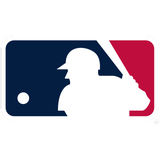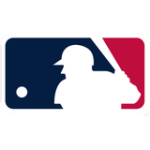
It’s sink or swim for the Marlins. Only four playoff appearances ever, but two have resulted in World Series titles. Fish fans will take that.
An expansion team in 1993, no Marlin has had his number retired. But still no shortage of stars in South Beach.
Manager: Jack McKeon
The Marlins followed up winning the 1997 World Series by posting five consecutive losing seasons and beginning the 2003 season at 16-22, which led to manager Jeff Torborg getting fired and McKeon becoming the team’s new manager. Then, something notable happened: Florida went 75-49 the rest of the season, was the NL wild-card seed and later beat the New York Yankees in the World Series in six games. The Marlins never made the playoffs again under McKeon, who was the 2003 National League Manager of the Year. Granted, they posted back-to-back winning seasons from 2004-05. In the end, though, the Marlins went 281-257 in the regular season under McKeon from 2003-05 and the final 90 games of the 2011 season, as he took over as interim manager in said season. McKeon’s 52.2% winning percentage ranks first among full-time managers in Marlins history and his 281 wins rank second.
(Photo By Eliot J. Schechter/Getty Images) <!–>
–>
Starting pitcher: Josh Beckett
Beckett spent the first five seasons of his MLB career with the Marlins (2001-05), with whom he came into his own as one of the best pitchers in the sport and was part of the franchise’s 2003 World Series triumph. In the 2003 postseason, Beckett posted a 2.11 ERA, 0.77 WHIP and 47 strikeouts across six appearances/five starts (42.2 innings), including two complete-game shutouts, one of them coming in the closeout Game 6 of the World Series in Yankee Stadium; Beckett won the 2003 World Series MVP Award (Beckett posted a 1.10 ERA and 19 strikeouts over 16.1 innings pitched in two starts throughout the series). Despite pitching just five seasons in South Florida, Beckett is second in Marlins history with a 3.46 ERA and eighth with both 607 strikeouts and a 10.7 WAR among pitchers and ninth with 41 wins.
ADVERTISEMENT
(Photo by Ezra Shaw/Getty Images) <!–>
–>
Reliever/closer: Robb Nen
Florida acquired Nen midway through his 1993 rookie season, and the right-handed reliever became an integral part of its bullpen in his first complete season with the team (1994). From 1994-97, Nen posted a combined 2.98 ERA and 27 saves per season. His 108 combined saves with the Marlins ranks first in franchise history. In Miami’s 1997 World Series season, Nen pitched in eight postseason games, including 1.2 shutout innings in the team’s closeout Game 7 victory against Cleveland.
Mandatory Credit: Brian Bahr/ALLSPORT (via Getty Images) <!–>
–>
Catcher: Charles Johnson
Johnson had two stints with the Marlins, the first coming from 1994-98, with him helping the franchise win its 1997 championship and then returning from 2001-02, earning an All-Star nod in 2001. A steady, all-around catcher, Johnson, a four-time Gold Glover and two-time All-Star, ranks first in Marlins history with an 8.6 defensive WAR and was a consistent offensive catalyst from the right side for Miami, hitting 19 home runs in 124 regular-season games in 1997.
(Photo by Sporting News via Getty Images via Getty Images) <!–>
–>
1B: Derrek Lee
Lee arrived in Miami in 1998 and would become one of the most consistent first basemen in the league. From 2000-03, the first baseman averaged 27 home runs and 81 RBIs per season, while posting a combined .276/.368/.495 slash line. Lee was a reliable hitter with power from the right side who held his own at first base for Miami. Lee is sixth in Marlins history with 129 home runs, seventh with 417 RBIs, eighth with 422 runs scored and ninth with both 746 hits and 159 doubles. While the 2003 season would be Lee’s last with the Marlins, he did help them win their last championship.
(Photo by Brian Bahr/Getty Images) <!–>
–>
2B: Luis Castillo
Castillo wreaked havoc for the Marlins. Spending the first 10 seasons of his MLB career in Miami (1996-2005), Castillo was one of the best second basemen of his era, a contact hitter and swiped bags at a high rate; Castillo led the NL in steals in 2000 and 2002. Castillo is first in Marlins history with 1,273 hits, 281 stolen bases, 675 runs scored, 42 triples and 4,347 at-bats, third with a 22.4 WAR, fifth with a .370 on-base percentage and seventh with a .293 batting average. Castillo, who started for the 2003 title team, was one of the most consistent players to suit up for the Marlins, with whom he earned each of his three Gold Gloves and three All-Star nods.
Greg Fiume /Allsport (via Getty Images) <!–>
–>
Before Cabrera mashed at the plate like he had a grudge on the Detroit Tigers, he did so with the Marlins from 2003-07. The intimidating, right-handed hitter was thrown into the fray as a rookie, starting and helping the Marlins win the 2003 World Series. Across his first four complete seasons in Florida (2004-07), Cabrera averaged 32 home runs and 115 RBIs per season, while posting a .318/.396/.551 slash line. He was an All-Star in all four seasons and a Silver Slugger in two of those seasons (2005 and 2006). Cabrera is first in franchise history with a .313 batting average, second with a .388 on-base percentage, third with a .542 slugging percentage, fourth with both 523 RBIs and an 18.3 WAR, tied for fourth with 183 doubles, is fifth with 138 home runs and sixth with 842 hits. All of that production was in five seasons.
(Photo by A. Messerschmidt/Getty Images) <!–>
–>
It took about five seconds for Ramirez to become one of the most exciting players in baseball in 2006. Ramirez hit for both contact and power, was a menace on the basepaths and made highlight-reel plays at shortstop. In 2009, he won the NL batting title, hitting .342. Ramirez spent the first six-plus full seasons of his career with the Marlins (2006-12), with whom he was a three-time All-Star and two-time Silver Slugger. Ramirez is second in Marlins history with 1,103 hits, 232 doubles, 230 stolen bases, 666 runs scored and a 26.9 WAR, third with both 148 home runs and a .300 batting average, tied for third with a .374 on-base percentage, is fifth with 482 RBIs and sixth with a .499 slugging percentage.
(Photo by Doug Pensinger/Getty Images) <!–>
–>
There are home runs, and then there are Giancarlo Stanton home runs. Before being traded in the 2017-18 offseason, Stanton was the most dangerous hitter in baseball, as his unreal power from the right side — which, at times, generates line-drive home runs that have to be seen to believe — was an ability second to Barry Bonds, if anybody in the 21st century. Spending the first eight seasons of his career with the Marlins (2010-17), Stanton led the NL in home runs and WAR twice apiece and slugging percentage three times, while hitting an MLB-best 59 home runs in his final season with them (2017). Stanton is first in Marlins history with 267 home runs, 672 RBIs, a .554 slugging percentage and a 35.8 WAR, third with both 202 doubles and 576 runs scored and fifth with 960 hits. Four of his five All-Star nods came with the Marlins.
(Photo by Mike Ehrmann/Getty Images) <!–>
–>
OF: Gary Sheffield
Sheffield only spent five years with the Marlins (mid-1993 through mid-1998), but they were impactful — and loud. In 1996, the electric, right-handed hitter totaled a then-career-high 42 home runs and 120 RBIs. The ensuing season, Sheffield was part of the Marlins’ 1997 title run and was spectacular in the postseason, totaling three home runs and seven RBIs, while posting a .320/.521/.540 slash line. Sheffield is first in Marlins history with a .426 on-base percentage, second with a .543 slugging percentage, seventh with 122 home runs, ninth with 380 RBIs and tied for 10th with a .288 batting average.
(Photo by George Gojkovich/Getty Images) <!–>
–>
OF: Juan Pierre
Pierre landed in Miami at an opportune time: 2003. The outfielder played in every regular-season game in each of his first three seasons with the Marlins (2003-05), with whom he averaged an astonishing 202 hits and 56 stolen bases per season while batting a combined .303 (Pierre left the Marlins after the 2005 season but played one more season for the franchise in 2013, his last MLB season). Pierre, who hit .333 in the 2003 postseason for Florida, was a nightmare for opposing teams. He was an elite contact hitter with elite speed who was elite in center field. Pierre is second in Marlins history with 34 triples, third with 190 stolen bases and fifth with both 561 singles and a .295 batting average.
(Photo by Rich Schultz/Getty Images) <!–>
–>
DH: Mike Lowell
Lowell spent the first seven seasons of his MLB career with the Marlins (1999-2005). A three-time All-Star, one-time Gold Glover and one-time Silver Slugger with the Marlins, Lowell gave Florida some of the best years of his career, serving as one of the best third basemen of the 2000s and a consistent, high-level run-producer, highlighted by a pair of 100 RBI-seasons in 2001 and 2003. From 2000-04, Lowell averaged 25 home runs and 95 RBIs per season, while posting a combined .280/.349/.485 slash line. Lowell is first in Marlins history with 241 doubles, second with 578 RBIs, fourth with both 965 hits and 143 home runs, fifth with 477 runs scored and eighth with a 14.2 WAR.
Andy Lyons /Allsport (via Getty Images) <!–>
–>
Honorable mentions:
- Dontrelle Willis (starting pitcher)
- Sandy Alcantara (starting pitcher)
- Jose Fernandez (starting pitcher)
- Steve Cishek (reliever/closer)
- Antonio Alfonseca (reliever/closer)
- AJ Ramos (reliever/closer)
- Armando Benitez (reliever/closer)
- Ivan Rodriguez (catcher)
- J.T. Realmuto (catcher)
- Jeff Conine (1B)
- Dan Uggla (2B)
- Cliff Floyd (OF)
- Marcell Ozuna (DH)
Want great stories delivered right to your inbox? Create or log in to your FOX Sports account, and follow leagues, teams and players to receive a personalized newsletter daily!
recommended

Get more from the Major League Baseball Follow your favorites to get information about games, news and more
This news was originally published on this post .





Be the first to leave a comment